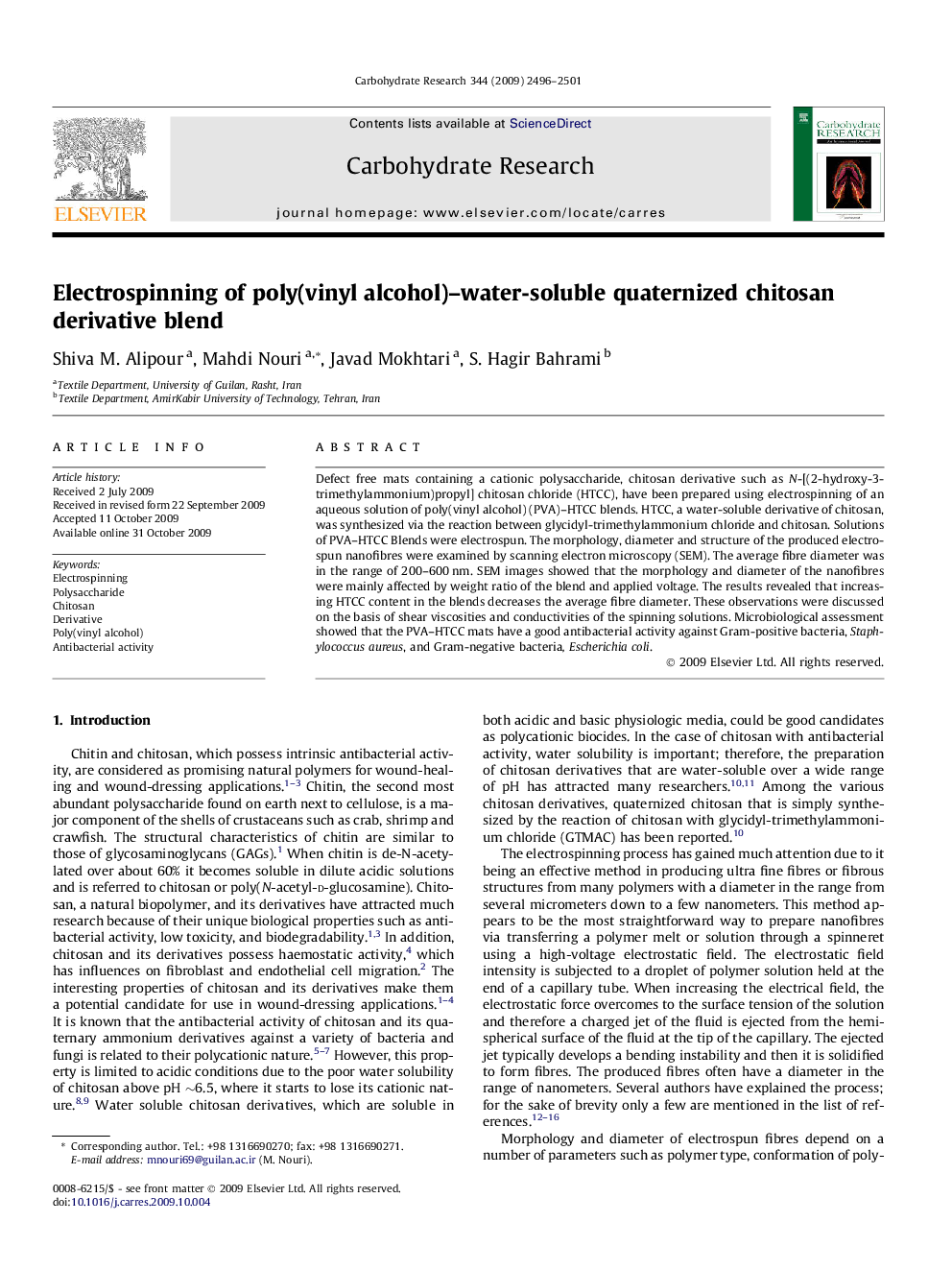| Article ID | Journal | Published Year | Pages | File Type |
|---|---|---|---|---|
| 1388181 | Carbohydrate Research | 2009 | 6 Pages |
Defect free mats containing a cationic polysaccharide, chitosan derivative such as N-[(2-hydroxy-3-trimethylammonium)propyl] chitosan chloride (HTCC), have been prepared using electrospinning of an aqueous solution of poly(vinyl alcohol) (PVA)–HTCC blends. HTCC, a water-soluble derivative of chitosan, was synthesized via the reaction between glycidyl-trimethylammonium chloride and chitosan. Solutions of PVA–HTCC Blends were electrospun. The morphology, diameter and structure of the produced electrospun nanofibres were examined by scanning electron microscopy (SEM). The average fibre diameter was in the range of 200–600 nm. SEM images showed that the morphology and diameter of the nanofibres were mainly affected by weight ratio of the blend and applied voltage. The results revealed that increasing HTCC content in the blends decreases the average fibre diameter. These observations were discussed on the basis of shear viscosities and conductivities of the spinning solutions. Microbiological assessment showed that the PVA–HTCC mats have a good antibacterial activity against Gram-positive bacteria, Staphylococcus aureus, and Gram-negative bacteria, Escherichia coli.
Graphical abstractFigure optionsDownload full-size imageDownload as PowerPoint slide
